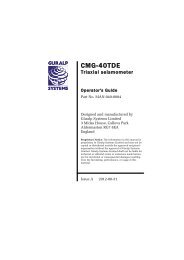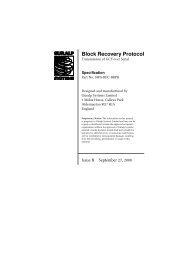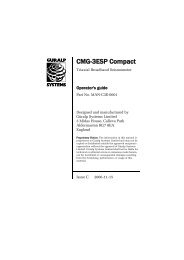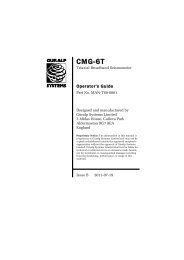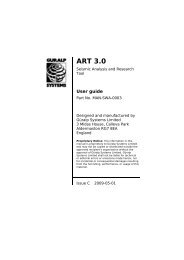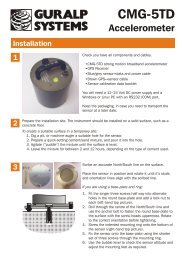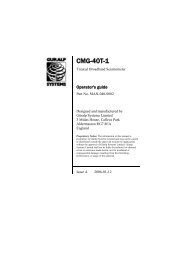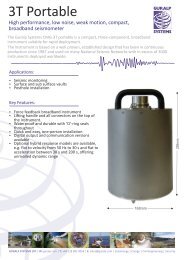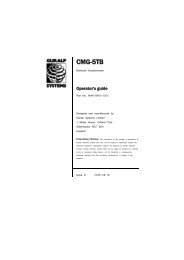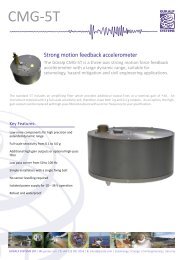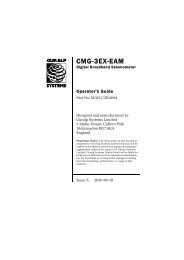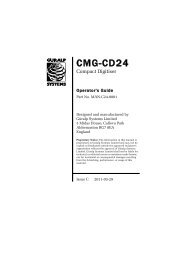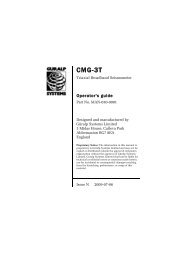linux-tools - Güralp Systems Ltd
linux-tools - Güralp Systems Ltd
linux-tools - Güralp Systems Ltd
Create successful ePaper yourself
Turn your PDF publications into a flip-book with our unique Google optimized e-Paper software.
<strong>Güralp</strong> <strong>Systems</strong> Linux <strong>tools</strong><br />
The daemon must be launched with a configuration file (see section<br />
5.2 on page 28). It does not background itself so, if launching from a<br />
shell use an '&' character at the end of the line to background it.<br />
Alternatively, use a program like start-stop-daemon or daemonitor<br />
(http://www.lwithers.me.uk/usr/src/daemonitor/). Note the daemon<br />
exits on unrecoverable error, so running it in a looping script (or using<br />
daemonitor) is recommended.<br />
Usage:<br />
tcpserial b baud c config.cf d /dev/ttyS0<br />
The b or baud option must be specified. Standard baud rates are<br />
1200, 4800, 9600, 19200, 38400, 57600, 115200 and 230400. If the<br />
hardware supports it, non-standard baud rates may also be used.<br />
The c or config option must be specified. It gives the path to the<br />
configuration file, which specifies the operating mode of the convertor<br />
(server/client) as well as the IP parameters to use.<br />
The d or device option must be specified. It gives the path to the<br />
device node of the serial port to convert. The daemon must have<br />
read/write permissions on the device node.<br />
3.4.1 Operating modes<br />
The daemon has two major operating modes: simple client and simple<br />
server. Both of these modes just convert serial data and ignore the<br />
control lines (hence “simple”). Other modes may be added on request.<br />
In simple server mode, the daemon acts as a TCP server. Any<br />
incoming client connection is accepted. Only one client may be<br />
connected, so a newly-connecting client will cause any existing client<br />
to be disconnected (this is in case an old client connection is broken<br />
but the session has not timed out yet). When a client is connected,<br />
data read from the serial port is sent to the client, and data read from<br />
the client is sent to the serial port. If no client is connected, data read<br />
from the serial port is discarded.<br />
In simple client mode, the daemon first establishes a connection to a<br />
remote server. Then data read from the server is written to the serial<br />
port and data read from the serial port is written to the server.<br />
Simple server and simple client modes are complementary; the client<br />
is designed to connect to the server. Once this has been achieved,<br />
there is effectively a transparent pass-through between the two remote<br />
serial ports (although note that the control lines are ignored).<br />
12 Issue E




